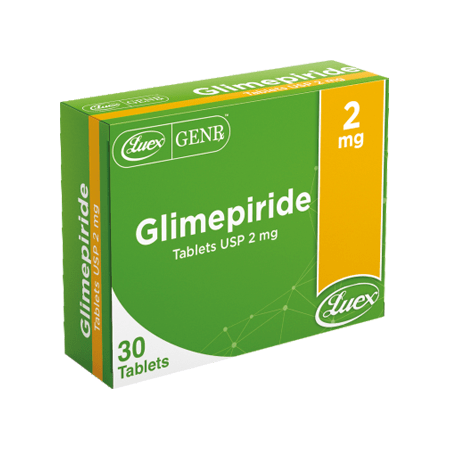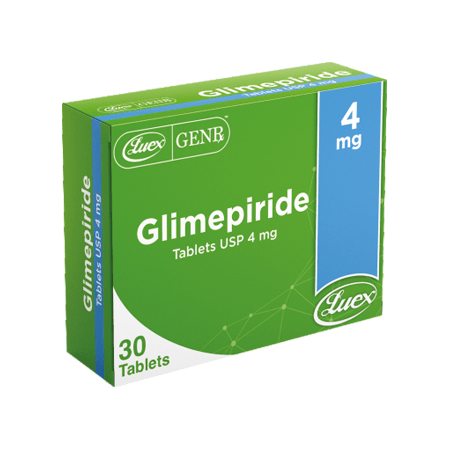Glimepride Range
Side Effects
- Hypoglycemia (low blood sugar)
- Dizziness
- Nausea
- Weight gain
- Headache
Frequently Asked Questions
How does Glimepiride work?
It stimulates the pancreas to release more insulin, which helps to lower blood sugar levels.
Can Glimepiride cause low blood sugar?
Yes, hypoglycemia (low blood sugar) is a common side effect, especially if meals are missed or the dosage is not adjusted appropriately.
What’s the difference between Glimepiride 2mg and 4mg tablets?
The primary difference is the strength. The 4mg dose is for patients who require a higher dose to control their blood sugar, while the 2mg dose is often used in milder cases or as a starting dose.
Can Glimepiride be combined with other medications?
Yes, Glimepiride can be used in combination with other antidiabetic medications like metformin or insulin, but it should be under medical supervision.
What should I avoid while taking Glimepiride?
Avoid skipping meals, as this may lead to low blood sugar. Also, limit alcohol intake as it can affect blood sugar control.
Got Questions or need to speak to a specialist?
You can reach out to us via email at support@luexhealthcare.com
Category
Antidiabetic
Best For
Diabetic Patients
Glimepride USP 2mg

Glimepiride is an oral antidiabetic medication belonging to the sulfonylurea class. It is primarily used to control blood sugar levels in patients with type 2 diabetes mellitus. It stimulates the pancreas to produce more insulin, helping to lower blood glucose levels.
Each tablet contains 2mg of Glimepiride as the active ingredient.
Type 2 Diabetes Mellitus:
Helps control blood sugar levels in adults with type 2 diabetes. It can be used alone or in combination with other medications, such as metformin or insulin.
- Initial dose: 1-2mg once daily with breakfast or the first main meal.
- The dose can be adjusted gradually depending on blood sugar response, up to a maximum of 8mg once daily.
Glimepride USP 4mg

Glimepiride is an oral antidiabetic medication belonging to the sulfonylurea class. It is primarily used to control blood sugar levels in patients with type 2 diabetes mellitus. It stimulates the pancreas to produce more insulin, helping to lower blood glucose levels.
Each tablet contains 4mg of Glimepiride as the active ingredient.
Type 2 Diabetes Mellitus:
Prescribed for patients needing higher doses to achieve glycemic control. It can be used alone or with other diabetes medications like metformin or insulin.
- Initial dose: 1-2mg once daily, with gradual adjustments as needed.
- Maintenance dose: Typically 4mg once daily, with a maximum of 8mg per day.
Trusted By More Than 500,000,000 Happy People
Join the Luex Healthcare family for a guranteed healthy life and general well-being.
